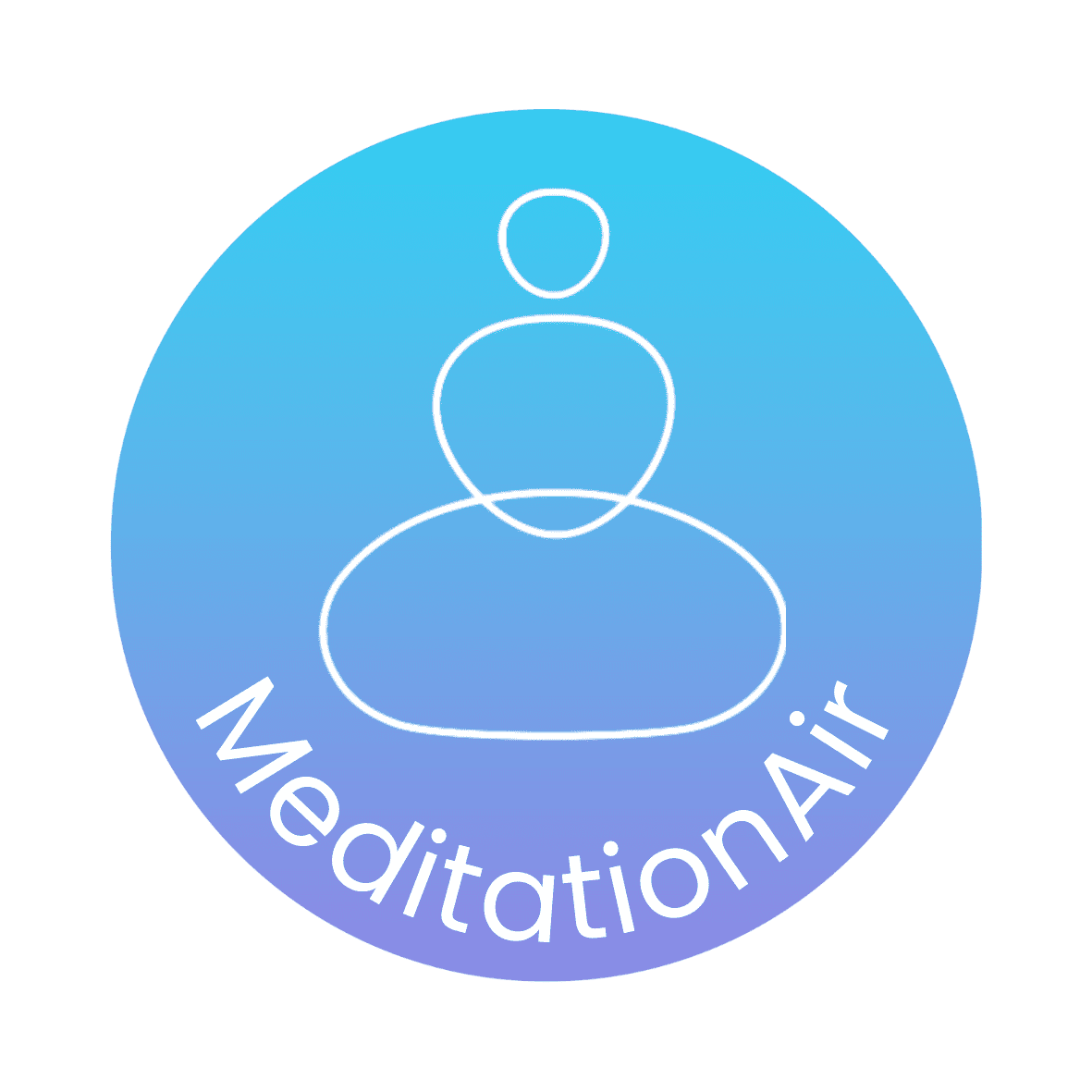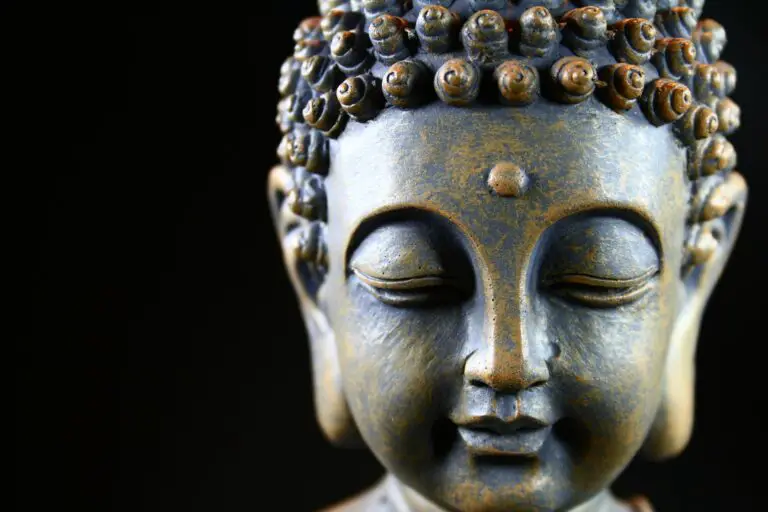Keep it fresh! Here are 5 unusual meditation techniques to try out:
Koans – stories and questions used as a tool in Zen meditation
100 breaths meditation
One word focus meditations
OM mantra sound bath
Sahaja meditation foot soaking
Ya’ll know that my favorite type of meditation is yoga mediation. But that doesn’t mean I don’t like to explore other forms, too.
Trying a different meditation technique often brings freshness and perspective into your regular practice. I am a big fan of experimentation.
In this post, I’ll introduce you to 5 unusual mediation practices that you may have never tried before.
Meditation has been around for millenia and its benefits are well known. It can help us relax, reduce stress, improve concentration, and even boost our immune systems.
Most yogis prefer to stick with one style of meditation in order to develop a strong, deep practice. But there are so many possibilities that are fun to experiment with on the side of your core practice.
From koans to foot soaking, these 5 techniques offer unique ways to connect with yourself and cultivate inner stillness.
Benefits Of Unusual Meditation Techniques
Exploring alternative meditations can be a great way to enhance your current yoga meditation practice. Here is a quick rundown of the benefits of my 5 favorite, less common meditation techniques that you may not have tried before:
| Technique | Benefits |
|---|---|
| Koans | Greater self-awareness and understanding. Better able to deal with ambiguity. |
| 100 breaths meditation | Mental relaxation. More energy. |
| One word focus meditations | Entry-level easy technique. Increases mindfulness. |
| OM mantra sound bath | Brings calm and reduces stress. Improves focus and concentration. |
| Sahaja meditation foot soaking | Promotes calm. Improves sleep quality. |
#1 Koans: Break the Thinking Mind
Koans are central to zazen meditation in Zen Buddhism. They originated with 7th century Chinese practitioners, and their history is long and complicated. I won’t get into it here. What’s important is to know what koans are and how they encourage us to transcend ordinary logical thinking toward a clearer mind.
What are koans?
First off, what are they? Koans are paradoxical or enigmatic statements, questions, or stories with no straightforward answers. They can take the form of a dialogue or simply a short text, and there are thousands of them. A few classic examples are:
- When both hands are clapped a sound is produced; listen to the sound of one hand clapping.
- Two monks are arguing about a flag. One says, “The flag is moving.” The other, “The wind is moving.” A third walks by and says, “Not the wind, not the flag; the mind is moving.”
- A monk asked Kegon, “How does an enlightened one return to the ordinary world?”
Kegon replied, “A broken mirror never reflects again; fallen flowers never go back to the old branches.” - What is the color of wind?
- The coin lost in the river is found in the river.
Traditionally, koans are introduced to students by their Zen masters. Practitioners meditate on a koan, allowing the words and concepts to penetrate their minds deeply. When a student thinks they have grasped the meaning of a koan, they present their understanding to the master. The master’s response guides the student’s further study and meditation with progressively more advanced koans.
The Goal of Koan Meditation
What’s the point of all of this? Meditating with koans moves us away from logical thinking, toward a place where we can accept ambiguity and paradox. It challenges our need to solve everything and just be present in reality.
In addition, koans reinforce the Buddhist tenet of non-duality: the idea that two things we have understood to be separate from one another are actually not separate at all. Like good versus evil, or dark versus light.
Breaking the mind of its habitual ways of thinking with koan meditation enables practitioners to gain inner peace, according to Zen Buddhism.
How to Try Koan Meditation
If you are not interested in diving deep into the practice of koan zazen (which takes years to master, by the way), I get it. But occasional koan meditation is a very useful way to change up your ways of thinking and reach a certain kind of mental liberation. Here’s how it works:
-
Select one of he koans listed above, or check out this list of 100 koans.
-
Take a seated meditation position. As with all positions, ensure your back is straight. Hands should be resting on your legs or in a mudra (for example, the chin mudra, where thumb and forefinger join to create a circle).
-
Bring the koan to your mind. Don’t try to reason or analyze it logically; instead, let it resonate within you. Repeat it to yourself multiple times.
-
Begin to contemplate the koan, ask questions, get curious. Maybe try examining just one piece or word of the koan. Remember, there is no wrong way to work with koans.
-
As in all meditation techniques, stay present. Part of the art of koans is to keep your mind in the here and now as you examine it.
You’ll find yourself thinking about the koan or any insights you might have discovered in meditation in daily life too. That just further expands the practice. As Zen master John Tarrant says, “The koan can be your friend.”
#2: 100 Breaths Meditation
This is one of my favorites for beginners. It takes less than 15 minutes, and it’s exactly what it says it is – breathing 100 breaths. The techniques vary.
Here’s the most straightforward technique:
- Take a seated meditation position. Ensure your back is straight, with hands resting on your legs in a mudra (for example, the chin mudra).
- Close your eyes and take a couple of deep breaths to settle in.
- Begin at 100, inhale and exhale. Then count down as you complete each inhale and exhale cycle.
- Try to keep each inhale and exhale to about the same length, and concentrate on filling your lungs completely and emptying them completely during each cycle. This will take 10 to 12 minutes.
- When you reach zero, feel free to hang out a bit longer in the meditation and just let your thoughts go where they will.
If you’d rather try this as a guided 100 breaths meditation, I would recommend these free sessions on Insight Timer (desktop app or mobile app):
- Audra Bear’s 100 Breaths of Joy – 3 sets of 33 fast breaths with fun, upbeat music
- Mike Schurko’s 100 Breaths – Energy Activation BreathWork – great for an energy reset
#3 One word focus meditations (and in only 1 minute!)
This is how I started meditating 4 years ago.
I was completely intimidated by the idea of sitting for long periods of time to meditate – and earlier attempts at it had been kind of a disaster.
Then I stumbled upon a podcast called “60 Seconds of Solitude” and it was a game-changer. The podcast is no longer being updated, but luckily there are over 350 old episodes there for you.
The technique is so simple. You receive a word and spend 1 minute thinking about what that word evokes for you. After 1 minute, the bell dings, and you’re finished. A few word examples:
Terrific
Powerful
Plentiful
Vibrant
Profound
Secure
Sensitive
Inviting
Interconnected
A minute feels surprisingly long when you are focused on 1 word and 1 task. Yet it’s short enough that your mind doesn’t wander.
The effect is profound, or was for me. It brought more mindfulness into my day and a motivation to keep doing this every morning.
Of course, you don’t need a podcast to do one word focus meditations yourself. Select a word (here’s a good source), find a quiet place to sit, set the timer on your phone for 1 minute, and go.
Source: Meditative Mind
#4 OM mantra sound bath
The combination of singing bowls and OM mantra chanting creates deep relaxation, enhanced awareness, and positive energy. This is one of the most powerful yet simple unusual meditation practices.
The Benefits of Chanting OM
OM is made up of 3 sounds, ‘A’, ‘U’ and ‘M’ (AUM) and is the most powerful of the single-syllable sounds used in mantra meditation (collectively called Bija Mantras). Mantras originated in the Vedic religion, the precursor to Hinduism, which is why OM is widely chanted during yoga and yoga meditation practices.
On the spiritual level, OM is considered to be the primordial sound of creation. Chanting it helps a yogi connect with the divine creator within them. In turn, it promotes a sense of oneness and interconnectedness with all living beings – since all living beings also have the divine creator within. This realization of the oneness of all things is the goal of spiritual practices in yoga.
Chanting OM, therefore, is an essential practice to grow spiritually as a yogi.
On the physical level, OM meditation chanting is shown to have multiple health benefits. A small study published in 2022 showed that chanting OM even for just 5 minutes can activate the parasympathetic nervous system, and enhance relaxation and calmness in both yogis and non-yogis alike. Other research on OM chanting benefits points to improvements in cognitive function, memory, and concentration; reductions in anxiety, depression; and higher levels of self-esteem, among other things.
Even without scientific evidence, yogis who meditate with the OM mantra know the immense sense of peace, mental clarity, and energy this practice delivers.
How to Do an OM Mantra Sound Bath
Adding the sound bath to yoga OM meditation deepens the experience since sound deeply affects our emotions – in this case, adding to our sense of calm and positive energy.
You’ll want to be sitting comfortably with a straight back in order to enable clear chanting. I recommend following a guided video, and there are many on YouTube, Insight Timer, and music streaming services.
Here are a few to explore in addition to the embedded video further up in this post:
#5 Sahaja meditation foot soaking
Sahaja Meditation Foot Soaking is a specific practice within Sahaja Yoga, a form of meditation founded by Shri Mataji Nirmala Devi.
In Sahaja Yoga, foot soaking is a cleansing technique that involves soaking one’s feet in warm water with added salt while practicing meditation. It is typically performed before going to bed, employing meditation during or after soaking for at least 5 minutes.
As for spiritual benefits, foot soaking cleanses impurities and removes blockages in the chakras. Imbalanced chakras lead to physical and emotional health problems, according to yoga philosophy.
On the practical level, foot soaking with meditation is simply so relaxing! The added physical comfort of soaking lets you sink deeper into calm meditation. Done before bedtime it helps you get to sleep faster, and, in my experience, leads to a more restful sleep.
The practice involves these steps:
- Fill a basin with warm water so that the water will reach just above the ankle. Add a handful of salt.
- Sit in a comfortable position near the basin and immerse your feet.
- Close your eyes and focus on your breath. You may want to visualize the impurities being washed away or repeat positive affirmations related to cleansing and spiritual awakening.
- Sahaja Yoga practitioners follow additional rituals outlined here, if that’s your thing.
- Rinse feet after soaking to remove salt.
I encourage you to take a leap of faith and try one or two of these unusual meditation techniques if they resonate with you. By trying something new, it can open up fresh perspectives. It’s like going down an unexplored path; who knows what insights await!



